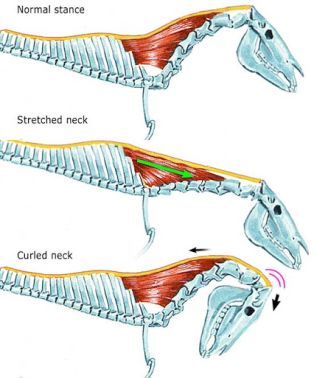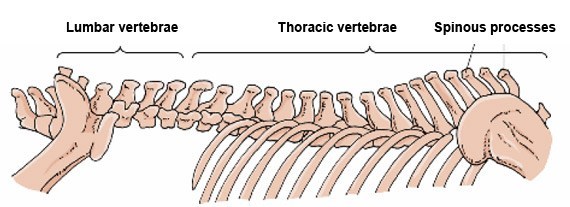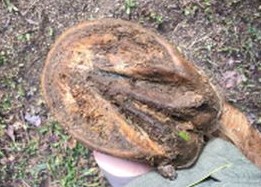 |
HeadThe head in most gaits acts as a counterbalance. The movement of the head tends to be rather energy efficient as it relies on some passive mechanisms. The nuchal ligament2 is highly elastic and acts like a spring alternating between potential and kinetic energy. This ligament provides between 30% and 50% of the energy needed to move the head in each gait2. As the head swings down, the ligament generates a restoring force pulling the head back up. The force of gravity allows the head to be lowered again without much effort. There is a frequency at which the head is stabilized mostly by inertia: 1-3 Hz2. Motions of the head also act to generate torque at the point between the neck and body, which can shift center of mass backward2 and aids in moving the front end. Image source:http://www.sustainabledressage.net/rollkur/why_not.php |
 |
Shoulders (& The Body)The shoulders and trunk of the horse play a part in the balance and momentum of equine locomotion. Horses hold a disproportionate amount of their weight on their front end. The trunk in all gaits has the least movement in the up-down and left-right direction compared to other parts of the body such as the head and neck2. The compact and relatively stiff nature of the horses spine may play a role in allowing this. Image source:https://www.horsetalk.co.nz/2015/02/04/help-horse-kissing-spine-goodbye/ |
 |
Knees and Toes
Arguably the most important aspect of the
horse's ability to run is the anatomy of their limbs. As
a horse's hoof contacts the ground, it can hit with
great force and acceleration, causing vibrations that
travel though the hoof and up the leg as they dissipate.
At the fastest gaits, this force can be up to 2.5 times
the horse's body weight4.
As Newton's Third Law states, for every force an object
applies there is an equal and opposite force applied
back. |